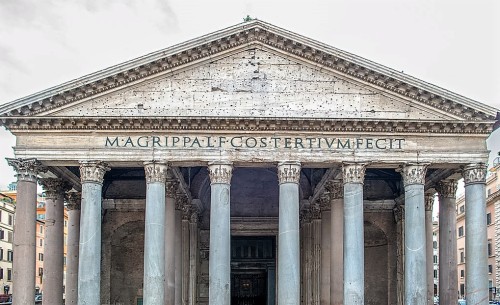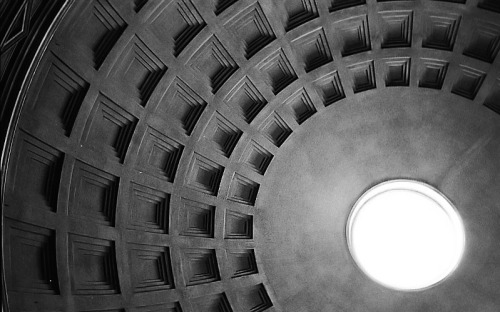What’s That In Front Of The Moon? It’s The International Space Station. Using Precise Timing,

 What’s that in front of the Moon? It’s the International Space Station. Using precise timing, the Earth-orbiting space platform was photographed in front of a partially lit Moon last year. The featured image was taken from Madrid, Spain with an exposure time of only 1/1000 of a second. In contrast, the duration of the transit of the ISS across the entire Moon was about half a second. The sun-glinting station can be seen just to the dark side of the day / night line known as the terminator. Numerous circular craters are visible on the distant Moon, as well as comparatively rough, light colored terrain known as highlands, and relatively smooth, dark colored areas known as maria. On-line tools can tell you when the International Space Station will be visible from your area.
Object Names: Moon, ISS
Image Type: Astronomical
Credit: Dani Caxete
Time And Space>b
More Posts from Novato-curioso-blog and Others
Por favor disfruten esta magnífica fotografía. El momento, la precisión, todo es fantástico.

. A blue shark surfaces near Santa Maria in the Azores. Photograph: Nuno Sa/NPL/Alamy. #Shark #Azores #SantaMaria
Viva Polonia

RIO2016: Maria Andrejczyk finishes 4th in Athletics - Women’s Javelin Throw. #TeamPoland #POL
Ohhhh el.Partenon, otra maravilla que espero poder conocer!!

Frederic Edwin Church, Parthenon, Athens, from the Northwest (Illuminated Night View), 1869 (source).
Simple y sencillamente: IMPRESIONANTE

When does the Sun look like a flower? In a specific color of red light emitted by hydrogen, as featured here, some regions of the solar chromosphere may resemble a rose. The color-inverted image was taken in 2014 October and shows active solar region 2177. The petals dominating the frame are actually magnetically confined tubes of hot plasma called fibrils, some of which extend longer the diameter of the Earth. In the central region many of these fibrils are seen end-on, while the surrounding regions are typically populated with curved fibrils. When seen over the Sun’s edge, these huge plasma tubes are called spicules, and when they occur in passive regions they are termed mottles. Sunspot region 2177 survived for several more days before the complex and tumultuous magnetic field poking through the Sun’s surface evolved yet again.
Object Names: Sun, Sunspot Region 2177
Image Type: Astronomical
Credit: Big Bear Solar Observatory, NJIT, Alan Friedman
Time And Space
La maravillosa construcción romana. No deja de sorprenderme y maravillarme.


The Pantheon in Rome | 2nd Century AD
This was and still is the most disgracefull act made by human race.

Boeing B-29 superfortress bomber “Enola Gay” named for Enola gay tibbets, the mother of the pilot Colonel paul tibbets. On the 6th of august 1945 Enola Gay became the first aircraft to drop an atomic bomb, codenamed little boy on the city of Hiroshima, japan.
“My god, what have we done”
- Cpt Robert Lewis, co pilot of Enola gay
Maravillosa imagen. Este es un excelente blog.

How could a galaxy become shaped like a ring? The rim of the blue galaxy pictured on the right is an immense ring-like structure 150,000 light years in diameter composed of newly formed, extremely bright, massive stars. That galaxy, AM 0644-741, is known as a ring galaxy and was caused by an immense galaxy collision. When galaxies collide, they pass through each other – their individual stars rarely come into contact. The ring-like shape is the result of the gravitational disruption caused by an entire small intruder galaxy passing through a large one. When this happens, interstellar gas and dust become condensed, causing a wave of star formation to move out from the impact point like a ripple across the surface of a pond. The intruder galaxy is just outside of the frame taken by the Hubble Space Telescope. This featured image was taken to commemorate the anniversary of Hubble’s launch in 1990. Ring galaxy AM 0644-741 lies about 300 million light years away.
Object Names: Ring Galaxy, AM 0644-741
Image Type: Astronomical
Credit: Hubble Heritage Team (AURA/ STScl), J. Higdon (Cornell), ESA, NASA
Time And Space
Guau!! Admirable, es impresionante lo que existe en nuestro Universo y lo que es pasmoso son las cifras de las distancias a las que nos enfrentamos en él.

 It is one of the more massive galaxies known. A mere 46 million light-years distant, spiral galaxy NGC 2841 can be found in the northern constellation of Ursa Major. This sharp view of the gorgeous island universe shows off a striking yellow nucleus and galactic disk. Dust lanes, small, pink star-forming regions, and young blue star clusters are embedded in the patchy, tightly wound spiral arms. In contrast, many other spirals exhibit grand, sweeping arms with large star-forming regions. NGC 2841 has a diameter of over 150,000 light-years, even larger than our own Milky Way and captured by this composite image merging exposures from the orbiting 2.4-meter Hubble Space Telescope and the ground-based 8.2-meter Subaru Telescope. X-ray images suggest that resulting winds and stellar explosions create plumes of hot gas extending into a halo around NGC 2841.
Object Names: NGC 2841
Image Type: Astronomical
Credit: Hubble Space Telescope, Subaru Telescope
Composition And Copyright: Roberto Colombari
Time And Space
Nuestro Universo, simple y sencillamente FASCINANTE. Les recomiendo ampliamente este blog Thetimeandsoaceblog, publica unas fotos admirables.

Very faint but also very large on planet Earth’s sky, a giant Squid Nebula cataloged as Ou4, and Sh2-129 also known as the Flying Bat Nebula, are both caught in this scene toward the royal constellation Cepheus. Composed with a total of 20 hours of broadband and narrowband data, the telescopic field of view is almost 4 degrees or 8 Full Moons across. Discovered in 2011 by French astro-imager Nicolas Outters, the Squid Nebula’s alluring bipolar shape is distinguished here by the telltale blue-green emission from doubly ionized oxygen atoms. Though apparently completely surrounded by the reddish hydrogen emission region Sh2-129, the true distance and nature of the Squid Nebula have been difficult to determine. Still, a recent investigation suggests Ou4 really does lie within Sh2-129 some 2,300 light-years away. Consistent with that scenario, Ou4 would represent a spectacular outflow driven by a triple system of hot, massive stars, cataloged as HR8119, seen near the center of the nebula. If so, the truly giant Squid Nebula would physically be nearly 50 light-years across.
Object Names: Squid Nebula/Ou4, Flying Bat Nebula/Sh2-129
Image Type: Astronomical
Credit: Steve Canistra (Starry Wonders)
Time And Space
Marte, el planeta misterioso, cada vez menos misterioso ante los avances de la ciencia. Pronto estaremos por ahí!!





92k Mars Color Map - Tuomas Kankola
-
 complistix-blog liked this · 7 years ago
complistix-blog liked this · 7 years ago -
 enunarealidadmuycercana-blog reblogged this · 8 years ago
enunarealidadmuycercana-blog reblogged this · 8 years ago -
 enunarealidadmuycercana-blog reblogged this · 8 years ago
enunarealidadmuycercana-blog reblogged this · 8 years ago -
 mioscene liked this · 8 years ago
mioscene liked this · 8 years ago -
 taliesyne reblogged this · 8 years ago
taliesyne reblogged this · 8 years ago -
 quinctonthezombie-blog liked this · 8 years ago
quinctonthezombie-blog liked this · 8 years ago -
 kuiperkat liked this · 8 years ago
kuiperkat liked this · 8 years ago -
 catboyprotag liked this · 8 years ago
catboyprotag liked this · 8 years ago -
 gardenthree reblogged this · 8 years ago
gardenthree reblogged this · 8 years ago -
 minimized reblogged this · 8 years ago
minimized reblogged this · 8 years ago -
 kiramaesavestheworld liked this · 8 years ago
kiramaesavestheworld liked this · 8 years ago -
 probablylostrightnow liked this · 8 years ago
probablylostrightnow liked this · 8 years ago -
 ferociousqueak liked this · 8 years ago
ferociousqueak liked this · 8 years ago -
 scythe-madame reblogged this · 8 years ago
scythe-madame reblogged this · 8 years ago -
 trumby reblogged this · 8 years ago
trumby reblogged this · 8 years ago -
 briarlily reblogged this · 8 years ago
briarlily reblogged this · 8 years ago -
 tiranosauriosrex liked this · 8 years ago
tiranosauriosrex liked this · 8 years ago -
 watsdaughter reblogged this · 8 years ago
watsdaughter reblogged this · 8 years ago -
 drakyndra reblogged this · 8 years ago
drakyndra reblogged this · 8 years ago -
 drakyndra liked this · 8 years ago
drakyndra liked this · 8 years ago -
 lyricwritesprose reblogged this · 8 years ago
lyricwritesprose reblogged this · 8 years ago -
 gremlingay reblogged this · 8 years ago
gremlingay reblogged this · 8 years ago -
 mysterygirl101universe liked this · 8 years ago
mysterygirl101universe liked this · 8 years ago -
 sylvansoldier-a liked this · 8 years ago
sylvansoldier-a liked this · 8 years ago -
 colecelot reblogged this · 8 years ago
colecelot reblogged this · 8 years ago -
 colecelot liked this · 8 years ago
colecelot liked this · 8 years ago -
 nxghtlight reblogged this · 8 years ago
nxghtlight reblogged this · 8 years ago -
 stinsonblue liked this · 8 years ago
stinsonblue liked this · 8 years ago -
 iodovulpes liked this · 8 years ago
iodovulpes liked this · 8 years ago -
 gswiwg liked this · 8 years ago
gswiwg liked this · 8 years ago -
 coffee-and-vroomvroom reblogged this · 8 years ago
coffee-and-vroomvroom reblogged this · 8 years ago -
 rageninjablog-blog reblogged this · 8 years ago
rageninjablog-blog reblogged this · 8 years ago -
 bigmarck001-blog liked this · 8 years ago
bigmarck001-blog liked this · 8 years ago -
 a-dream-seeking-light liked this · 8 years ago
a-dream-seeking-light liked this · 8 years ago -
 slothhhhh reblogged this · 8 years ago
slothhhhh reblogged this · 8 years ago -
 redautumnrose reblogged this · 8 years ago
redautumnrose reblogged this · 8 years ago -
 eddywards liked this · 8 years ago
eddywards liked this · 8 years ago